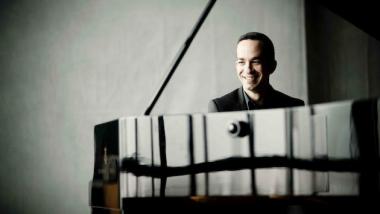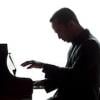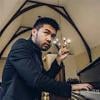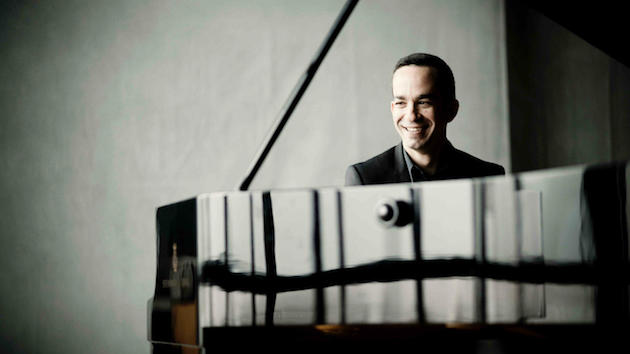
In real estate, it’s all about location; in concertizing you might say it’s all about programming. At least that’s the way it is for Israeli-born, New York-based pianist Inon Barnatan, who makes his debut at the Wallis Annenberg Center for the Performing Arts on June 22. With eclectic fare ranging from Bach and Handel to Ligeti, Couperin, and Adès, the idiosyncratic bill also includes Ravel, Barber, and Brahms.
Barnatan, who recently turned 40, began piano lessons at age three, after his parents realized their son had perfect pitch, and made his orchestral debut at eleven. The musician then went on to study with some of the 20th century’s most noted pianists and teachers, including at London’s Royal Academy of Music with Christopher Elton and Maria Curcio, a student of the legendary Artur Schnabel, and then, in New York, with Leon Fleisher. Praised for his poetic sensibility, musical intelligence and consummate artistry, Barnatan was the recipient of a prestigious 2009 Avery Fisher Career Grant, and in 2015, he received Lincoln Center’s Martin E. Segal Award, one that recognizes “young artists of exceptional accomplishment.”
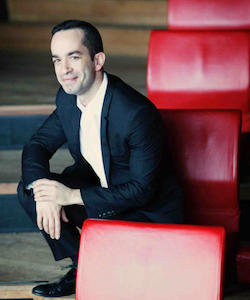
Barnatan recently completed his third and final season as the inaugural Artist-in-Association of the New York Philharmonic. A sought-after chamber musician, he is an alumnus of the Bowers Program (formerly Chamber Music Society of Lincoln Center Two), and has also collaborated with choreographer Mark Morris, pianist Garrick Ohlsson and the Mark Morris Dance Group at the 2016 Mostly Mozart Festival.
That partnership continues this summer, as Barnatan was recently named music director of the La Jolla Music Society’s Summerfest and has invited Morris’s dance troupe. Barnatan’s critically acclaimed discography also speaks to his wide-ranging musical tastes. In 2006, he released a recording of Schubert works, with Gramophone praising the pianist as a “born Schubertian,” and in 2016, Barnatan released a live recording of a reduction of Messiaen’s 90-minute orchestral masterpiece, Des canyons aux étoiles (“From the Canyons to the Stars”) from the Santa Fe Chamber Music Festival.
I caught up with the fiendishly busy pianist on FaceTime from Belfast, Ireland, where he was performing the Mozart Piano Concerto No. 20 with the Ulster Orchestra.
Your Wallis recital covers a lot of bases. How do you transition from playing Bach and Handel to Adès’s Blanca Variations, which is sandwiched between works by Ravel and Ligeti?
To me, in some ways, the point of the program is how interrelated a lot of this music is and how much composers took inspiration from what came before them. I think we tend to think of music as being in a box — this or that or from that era or period — but composers have been learning from one another and been inspired from one another for a long time, especially in the Baroque [era]. The first half is meant to be performed as if it was a suite, like a Baroque dance suite, but every movement is by a different composer and all the 20th-century movements are either inspired by or in some ways they take their source or their feeling from the Baroque period.
One of the pieces from Ligeti [Musica Ricercata, Nos. 11 & 10] is an homage to Frescobaldi. It’s also canonic [with] the idea inspired by Baroque music. It’s called “Researched Music” and a lot of it comes from what came before him. It’s also a Baroque dance suite that inspired this idea of these movements strung together.
The second half of the program I call “Variations on a Suite,” because it is actually a set of variations by Brahms on a movement from a suite by Handel. It all makes sense intellectually, but what was important to me is musically, the program makes sense. A program is a chance to put things together that interact with each other and when you hear them next to each other, it makes more of an impact. Whenever I play this program I always find new connections and I play them differently. When you play Brahms or Ligeti next to Bach or Handel, you find so much more inspiration.
I also try to think of a program as a journey; programming is an art. Every recital is different and starts from a different departure point. In this recital, the departure is the Adès piece, Blanca Variations. I love his music and whenever he has something new, I always seek it out and at that point [2015] this piece was brand new. At the time I didn’t know what “Blanca Variations” meant. All I knew is that it had a Baroque feel to it — like a saraband — and it was this miniature set of variations. It turned out to inspire the entire program.
Your recording of atmospheric masterpieces by French and English composers, Darknesse Visible, features music of Ravel, Debussy, Adès, and Stevenson/Britten. It made The New York Times’ “Best of 2012" list, with that paper’s Anthony Tommasini writing, “Mr. Barnatan’s playing is both delicate and haunting.” It also debuted in the Top 25 on the Billboard Traditional Classical chart. What kind of a boost does that give to your career and what are you currently working on?
It was wonderful in some ways, and one of the reasons that it did so well, it highlighted how important programming is to me, not only in concert but on recordings. Up until then, I was more known as a Schubert player in terms of a recording. My next recording is all Beethoven, the complete piano concertos. In the fall [will] be the first of two releases with the Academy of St. Martin in the Fields and Alan Gilbert is conducting. We have a very good rapport and those recordings were really a labor of love. The Academy I’ve performed with many times and felt that they were an extended musical family, and it felt the same with this album. I also feel the same about those concertos — they’ve been family to me since the beginning.
While you’ve certainly performed at La Jolla Summerfest over the years, this is your first season as music director of the long-running celebration of chamber music. The (Aug. 2 -Aug. 23) features a number of friends, such as pianist Conrad Tao, cellist Alisa Weilerstein, and Mark Morris Dance Group, who will be performing a world premiere set to the music of Handel. How did you go about programming the festival and what can we expect to see?
I actually never thought about being a director of a festival, but when it came up it really struck me how many of the things that I love I can explore as a music director. It’s such a wonderful festival with this incredible new performing arts center that we opened in April. I’m using the past, which has a lot to preserve, to look at the future. The possibilities for programming, making music, and thinking about the role of a 21st-century musician, and being able to collaborate with other artists and other art forms, convinced me that I needed to add this to my busy schedule.
The season’s theme is transformation, composers building on other composers’ music, like I do with my recital programming, and one art form transforming another. The “Synergy Series” was born out of my interest in the connections between chamber music and jazz, visual art and dance, and it was the brainchild of me and my co-producer [Clara Wu Tsai]. I wanted to explore the space in which classical music and those art forms inspire one another, so working with Mark Morris seemed natural [since] I performed with him a few times already. My mother was a dancer and choreographer — she went to the Martha Graham School — and I grew up with a lot of admiration for contemporary dance. It is something that I love dearly and still follow, and it was clear to me that it would be in some ways part of Summerfest.
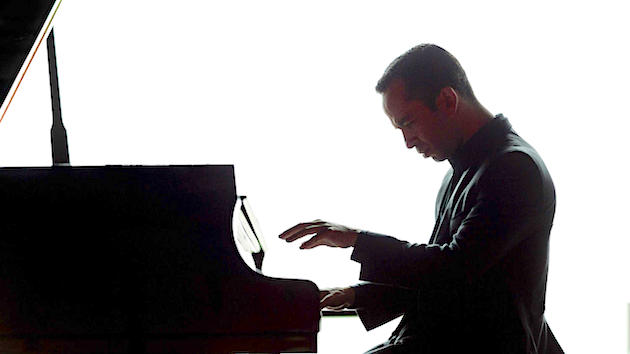
In addition to listening, what is the key to performing chamber music, and what is it like always having to play on different pianos when you’re on the road?
It sounds simple — listening — but it’s actually complicated. Listening doesn’t mean hearing, it means absorbing, understanding what you’re hearing, so if you’re playing well with a string player, for example, you have to understand how they make a sound, how they phrase, and try to come together with that. It’s the same for [performing] with a singer; it’s the same way with any instrument, and it’s the same with a dancer. If you’re playing with a dancer, you have to understand how they work with music, what takes time. Listening is a very complex concept and it’s one of the most fascinating aspects of playing chamber music. For me, chamber music, orchestral work, and recitals, these are not things I do regularly, but things I love doing and I think they feed into each other. You can’t really play a Mozart or a Beethoven — or any concerto — without understanding what it’s like to know chamber music.
As a pianist, you’re also playing chamber music, even if you’re playing a piano just with yourself, because every piano is different. In some ways, it’s very different and you’re almost collaborating with the instrument. You have to understand your partner and work with them and not against them. When you’re working with a violinist, you’re not doing what you’re used to doing but you [do]what makes sense together. It’s the same when working with a new instrument. You’re trying to understand what that instrument does and what it does best. A great thing about a piano is it absorbs all these influences and you want to make it sound more than a piano. You have to be able to imagine these sounds.
What is your preferred piano and what is your practice regimen?
I’m a Steinway Artist, and to be honest, it’s most of what’s available, which is good, because I love Steinways. I’m on the road quite a lot, and because it’s such a big part of my life, there is no regimen. You can’t have a regimen, because you’re never going to be able to stick to it. Every day is different, and you try and get time whenever you can to be on the piano and that time is what you use. It also depends on what you have to practice. It’s not a routine and one day is not like the other: there’s no typical day. In some ways, it’s easier to practice when I’m not at home because there are less distractions,
Even when I’m home in New York there’s no typical day. I have a million things to do — there are friends and all sorts of thing and home life. Sometimes when you’re somewhere else without being at home, it’s much easier to focus when you have two hours than when you have the whole day. You need to be efficient. I think we all have that, or most of us are the same, in any case.
What advice would you give to young musicians?
It’s a really great age for art because ideas matter, I think, more now than ever. So, I think my advice would be to stick to your guns and do what you believe in and do it to the absolute best of your ability and do things that are true to you and not get too distracted by the idea of success.
I try to follow my own advice. As an artist you can either do what you believe in and hope that people will like it or do what people would like. If you’re the latter, I don’t think that you’ll do well. I think listening to yourself is the most important thing.

